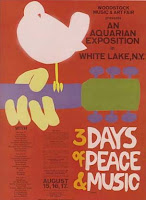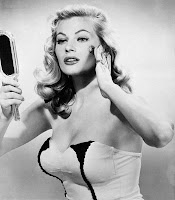Robert LaValva, the founder of the New Amsterdam Market, is a self-proclaimed New Netherlander. "New Netherland," as he uses it, refers to a time when New York City was known as New Amsterdam, the capital of its surrounding territories that composed New Netherland (including LaValva's home state of New Jersey). When the Dutch settlers first arrived in New York in 1624, they carried with them nostalgia for their homeland and the hope that they could recreate it abroad. Hence, New Netherland was born, along with the inspiration for LaValva's current project: to recreate the public market of New York.
Although its concept has been reinvented for a modern society, the idea of the public market as a setting to encourage the exchange of locally produced goods dates back to the arrival of the first Dutch settlers on the island. Even then, New York City was the commercial center of the surrounding region. Its primary function was to support the agriculture outside of the city by serving as a venue for local goods.
"I was inspired by the idea of New Amsterdam supporting the region of New Netherland," LaValva explained. "There is a very time-honored relationship between cities and the regions around them that has fallen apart in the last 100 years."
The New Amsterdam Market is not the same as, but rather an addition to, the City's thriving Greenmarkets, which are really a farmer's market-- about 99% of the vendors at any of the Greenmarket's 46 locations are farmers. The New Amsterdam Market is a purveyor's market, a place where the butchers, the bakers, and the candlestick makers can sell their wares. All local businesses within 500 miles of New York City are invited to participate. LaValva believes that his market is an inevitable next step as the Greenmarket model evolves to incorporate more local businesses.
"As more and more people want to support local agriculture, you can't just have farmers," he said. "As a purveyor's market, New Amsterdam Market will add greater depth, reach, and complexity to the alternative food system so many of us are striving to create, which must also include farmer's markets."
The first market was held in October 2005 at the New York City Municipal Building by Brooklyn Bridge. Since then two markets (one in December 2007 and June 2008) were held at the Seaport. LaValva considers his choice of this symbolic site a "project within a project," bringing New Yorkers back to the downtown Manhattan area. The most recent market in June was the most successful, attracting more than 65 vendors and about 8,000 people out into the summer heat. Crowds included New Yorkers from all over the five boroughs, as well as curious out-of-towners.
people's popsicles, a NYC-based company that makes their pops from local produce, was one of the vendors offered a stand at the 2008 market. Nathalie Jordi, one of the company's three popsicle-makers, also sees the need for a new market not just exclusive to farmers.
"Our company is delighted to use Greenmarket produce because it's fresh, local, and sustainably sourced, but we can't have a stand on the Greenmarket because we don't grow our own fruit," Jordi said. "New Amsterdam and Greenmarket are different, but both necessary and fully coexistable in New York City."
Although preserving the environment and presenting another sustainable solution for New Yorkers is at the forefront of the New Amsterdam Market project, La Valva is reluctant to put a green label on his efforts.
"Sustainability is a dangerous word," LaValva cautioned. Anyone aware of pop culture can understand what he means by "dangerous." Society has become so inundated with so-called "green" products and services that the environmentalist vernacular has lost its meaning, an effect called "greenwashing." Big companies are so eager to associate themselves with the positive energy of the green movement that they often brand their unsustainable products as environmentally sound alternatives.
LaValva has his own take on sustainable. While the first aspect of his definition is in line with the traditional concept of sustainability, summarized in the question of how do we produce what we need without contaminating the environment, depleting resources, and compromising diversity, the second part is all his own. He believes that the earth's inhabitants should look to nature on how to live life because nature is the only thing that has remained unchanged since the earth's infancy. As an example, he points to German painter Albrect Dürer's "The Great Piece of Turf." The grass depicted in Dürer's painting from 1503 is no different from the grass now in Central Park. LaValva asks, have we (i.e. the entire human population, ever) been able to make something to last 506 years without changing?
The New Amsterdam Market is scheduled to commence its monthly meetings on June 28, however the exact location of the market is still unknown. It has been an ongoing goal for the organization to secure a permanent, covered, and public venue. LaValva held a successful fundraiser last February, Founded on Oyster Shells, in a gallery space in Hell's Kitchen, which brought in over $28,000. Patrons sipped local brews while snacking on artisan bread and butter. The star attraction of the evening was the bountiful oyster buffet, with oysters hailing from all regions of New Netherland.
Chris Quartuccio, the founder of the Blue Point Oyster Company, was in attendance to supervise the shucking and slurping of his South Bay pride and joy, the Blue Point Oyster. Native only to Long Island's Blue Point Bay, the name "Blue Point" was trademarked by a New York state law enacted in 1908. While Quartuccio distributes his product to Las Vegas, Washington, D.C., Philadelphia, San Francisco, Boston, and locally in New York City, he feels that a market such as New Amsterdam would open up business. He supports the idea of "bringing all these artisan producers under one roof."
Despite the need to raise funds to secure a permanent home for the market, the fundraiser had an added significance for the director and his company. The year 2009 marks the Quadricentenntial Anniversary of the founding of New Amsterdam, beginning with Henry Hudson's discovery of the new York Harbor in September 1609.
"This year is an important year for New Netherland because 400 years ago the Dutch came to New World," he said. "It's the birth of the idea of New Netherland, the year people remember this region."








